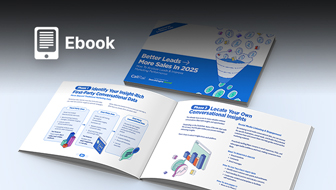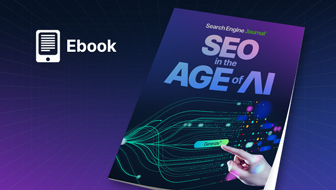This post was sponsored by Rio SEO. The opinions expressed in this article are the sponsor’s own.
Customer experience (CX) is more than just a buzzword – it’s what shapes a customer’s impression of your brand and how they talk about you with their friends, family, and business partners.
But as you think about scaling your CX efforts and local experience optimization, you may be wondering – where do you begin?
When it comes to thinking about your CX, you’ll want to consider your company’s:
- Local business listings, such as your Google Business Profile or your place on Apple Maps.
- Online reviews.
- Ease of checkout.
- Customer service channels.
- Ease of word-of-mouth marketing.
With all of these factors in play, how do you know that updating your customer service experience will be worth it?
Data says it’s worth taking the time to update your CX.
In fact, 94% of consumers say a bad review has convinced them to avoid a business entirely – and that’s just within one great area of improvement.
What if we taught you how to improve all areas of your customer experience?
Today, we’ll talk through five ways you can easily improve your customers’ experiences and increase your company’s profits at scale.
But first, let’s chat about why you would want to improve this experience.
How Will Improving Customer Experience Help Improve My Sales?
Your prospects have expectations before they discover your store on Google, so it’s vital that your brand matches their needs.
In fact, building a positive customer experience begins the moment a search is conducted for your product or service.
It then extends from navigating your website to shopping in-store or online to post-sale opportunities to leaving a review.
What Areas Of The Shopping Journey Help Influence A Customer’s Purchase?
CX is a large factor in whether someone purchases a product or service from your company.
And, it begins the moment a customer becomes aware of your business and continues through five full phases:
- Awareness Phase: Your future customer has a problem and seeks a solution. This may occur with a Google search seeking a product or service, and your potential customer may be convinced to check you out through your local business listing.
- Consideration Phase: Your potential customer will weigh several options, determining if your business will best meet their needs. They may read online reviews to help them make this decision, so it’s important to make sure your reviews are appealing.
- Purchase/Decision Phase: During this phase, your website visitor becomes your customer.
- Retention Phase: Your business continues to build a relationship with your customer to transform them into loyal shoppers. You can do this with email marketing, tailored discounts, digital feedback, and more.
- Advocacy Phase: If your business provides an exceptional CX, customers may feel inclined to advocate for the business through word-of-mouth marketing or by leaving a positive review.
Customer perceptions are forged across every step of the customer journey, which is why CX must become a top priority for all businesses across all verticals.
We know it seems like a lot, which is why we want to focus on scaleability – how you can easily implement these upgrades with minimal work or bandwidth?
What strategies can you implement to make these positive changes easier on you and your team?
Here are our favorite five actionable strategies to deliver unparalleled service that boosts customer loyalty and leads to customer advocacy, post-sale.
Strategy 1: Optimize Your Local Search Experience With Correct Information
First, let’s consider how a potential customer finds your brand during the awareness phase.
When it comes to consumers who are unfamiliar with your brand, their digital journey begins the moment they conduct a search.
The first time they see you on a SERP, they find your business listing, which contains a minimum of your:
- Business name.
- Address.
- Phone number.
- Other pertinent information.
They expect that information to be correct.
How jarring would it be for a customer to try calling, only to find out that the incorrect number makes it seem like your company is no longer in business?
If your business listing has just one piece of inaccurate information, you risk creating bad customer experiences from the start.
55% of consumers say an inaccurate or missing website link frustrates them most when searching online for a business, while another 50% say an incorrect or missing phone number frustrates them the most.
So, it’s very important to nip awareness phase problems in the bud by making sure every piece of information on your business profile is correct.
What Accurate Information Should My Google Business Profile Have?
At a minimum, ensure the following Google Business Profile fields are up-to-date for each of your listings:
- Business name.
- Primary category.
- Business description.
- Address.
- Phone number.
- Hours.
- Website link.
- Attributes.
How Can I Easily Make These Improvements At Scale?
While you can update this information across multiple search engines by hand, we have an easier way.
Local listing management is an integral component of any customer experience strategy.
It can help eliminate misinformation, and ensure accurate and up-to-date information is present across the entire search ecosystem.
That way any time a customer searches for your business, regardless of location, they’ll find the right way to reach or find you.
This ensures you’ll never miss a potential sale, and it helps your business build a positive experience from the start.
Strategy 2: Smoothly Provide Quick Exceptional Customer Service
Customer experience management means meeting your customer’s needs in any place, at any time.
This includes the time spent in the discovery phase, when your possible customers are deciding whether they should make a purchase with your business.
In this stage, your shoppers may contact your customer service team if they have questions.
Your contact center must be armed with the tools they need to answer customer questions as quickly and effectively as possible.
Close to half of all customers (46%) expect companies to respond faster than 4 hours after a question has been asked.
Additionally, 12% expect a response within 15 minutes or less.
What Platforms Should I Use To Allow For Quick Responses To Customer Questions?
Each individual customer has a favorite method to reach out to a company.
Your strategy is to be in each place your customers hope to see you.
Consider upgrading to communicate with your customers through:
- Chatbots.
- Contact forms.
- Google Q&A.
- Google Messaging.
- Your social media channels.
The key is to be ready to answer quickly on any available platform.
Your customer support team must be prepared to provide a response. And, fast.
If you wait to address customer questions or concerns, you risk not meeting customer expectations and, in turn, having those customers turn to your competition to satisfy their needs.
Our favorite way to reduce the number of questions your customers have is to reduce friction during the purchasing process.
That leads us to our next way to scale CX.
Strategy 3: Create A Seamless Purchase Experience
Optimizing your business listings and communication channels are only the first steps toward building positive customer experiences.
Next, you’ll want to create a seamless conversion experience.
Whether you want your customers to book an appointment, create a reservation, request a quote, drive to a physical location, or make an online purchase, your potential customers do not want to be met with any friction when completing the desired conversion.
How Do I Reduce Questions & Improve Conversions?
Here are a few ways to ensure customer interactions with your business lead to more sales:
- Ensure all CTAs on your business listings link to the right landing pages, whether that is a link to book an appointment or a link to your location’s landing page.
- Keep your checkout process short and simple. The average checkout flow is 5.2 steps long and has 11.8 form fields.
- Optimize your website design. Avoid too much text and clutter, and make your CTAs prominent.
- Improve your site speed. This has long been important to Google, so much so that they may penalize sites with slow site speeds. It also negatively impacts the overall experience for your customers.
- Reduce the number of requirements to make a purchase. Customers shouldn’t have to jump through hoops to buy from you. For example, they should have the option to make an account or checkout as a guest. If your only option is to create an account, the end-user may find this to be time-consuming and burdensome and abandon their cart.
Strategy 4: Improve Customer Retention
Once a customer has made a purchase, customer experience management doesn’t end there.
Now, your business can transform your new customers into long-term loyal customers.
How Can B2C Companies Improve Customer Retention?
For B2C companies, this may mean building customer relationships by sending targeted marketing emails and offers based on their previous search and purchase history.
Or, you may encourage the customer to join a loyalty program.
How Can B2B Companies Improve Customer Retention?
For B2B companies, this may mean providing in-depth product training, top-notch ongoing support, regular check-ins, and clear communication when products are enhanced to reduce the risk of customer churn.
Strategy 5: Make It Easy For Customers To Leave Reviews & Feedback
If your company provides positive customer experiences, customers may feel inclined to leave positive feedback.
By turning your customer base into loyal supporters, you improve your business’s ability to retain current customers and gain new ones.
Your loyal supporters, or customer advocates, are more likely to leave a positive review for your business and share their experience with friends, perpetuating word-of-mouth marketing.
How Can Feedback & Reviews Help My Business?
Feedback allows your business to gauge customer satisfaction or identify areas for improvement.
It also helps you pinpoint common themes, such as lack of available payment methods or issues with customer service.
How Can I Easily Get Reviews & Feedback From Customers?
Embed a digital feedback solution into your local landing pages, locators, and mobile apps to intercept this crucial feedback from current customers.
This allows consumer experiences to be shared in an organic way and is an easy way to obtain customer feedback.
Use Streamlined Tools To Upgrade Your Customer Experience
When marketing teams prioritize customer experience management, they’re better able to meet customers at every stage of the buying experience with the right content and information.
Having a firm understanding of how customers respond at various stages, from finding your business in search to advocating for your brand after the sale, can ensure a positive experience and hopefully, a repeat customer and brand advocate.
As with most marketing efforts, customer journeys are always evolving and require consistent analyzing and refining to ensure you’re meeting your prospective customers in the moments that matter most. Yet, this can’t be accomplished without the right tools and technology in place.
This is where customer experience tools come into play.
Rio SEO has combined with Forsta to introduce an integrated set of Local Experience (LX) solutions, the industry’s only end-to-end local marketing and customer experience platform for enterprise brands.
Image Credits
Featured Image: Rio SEO






